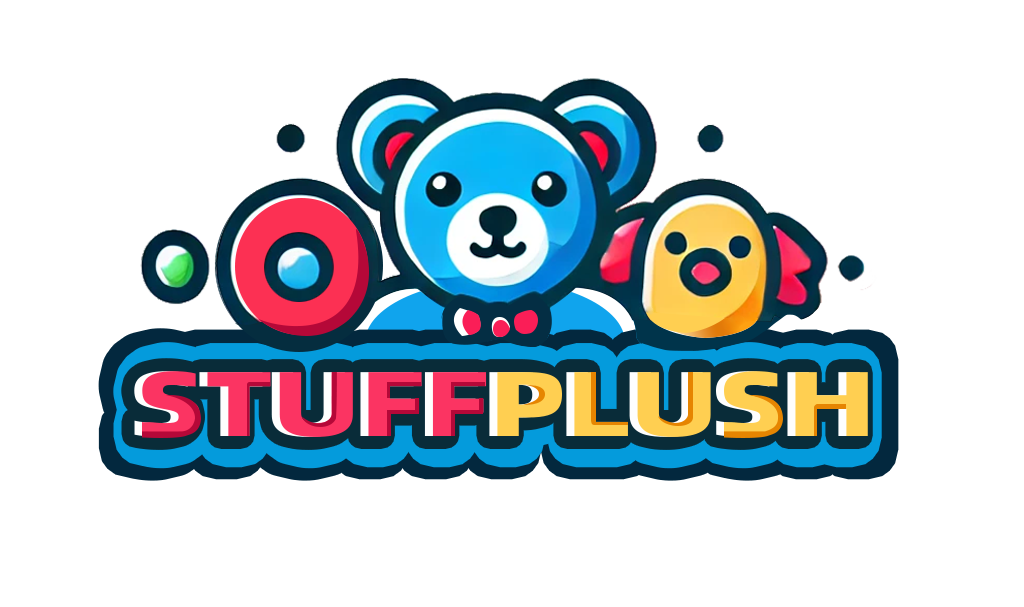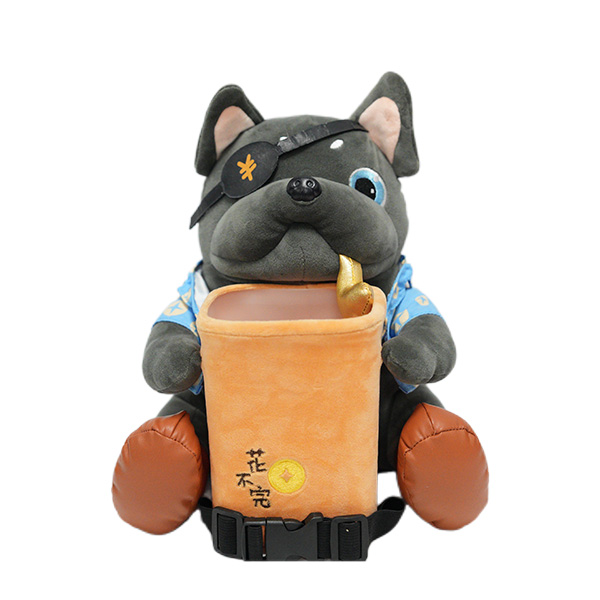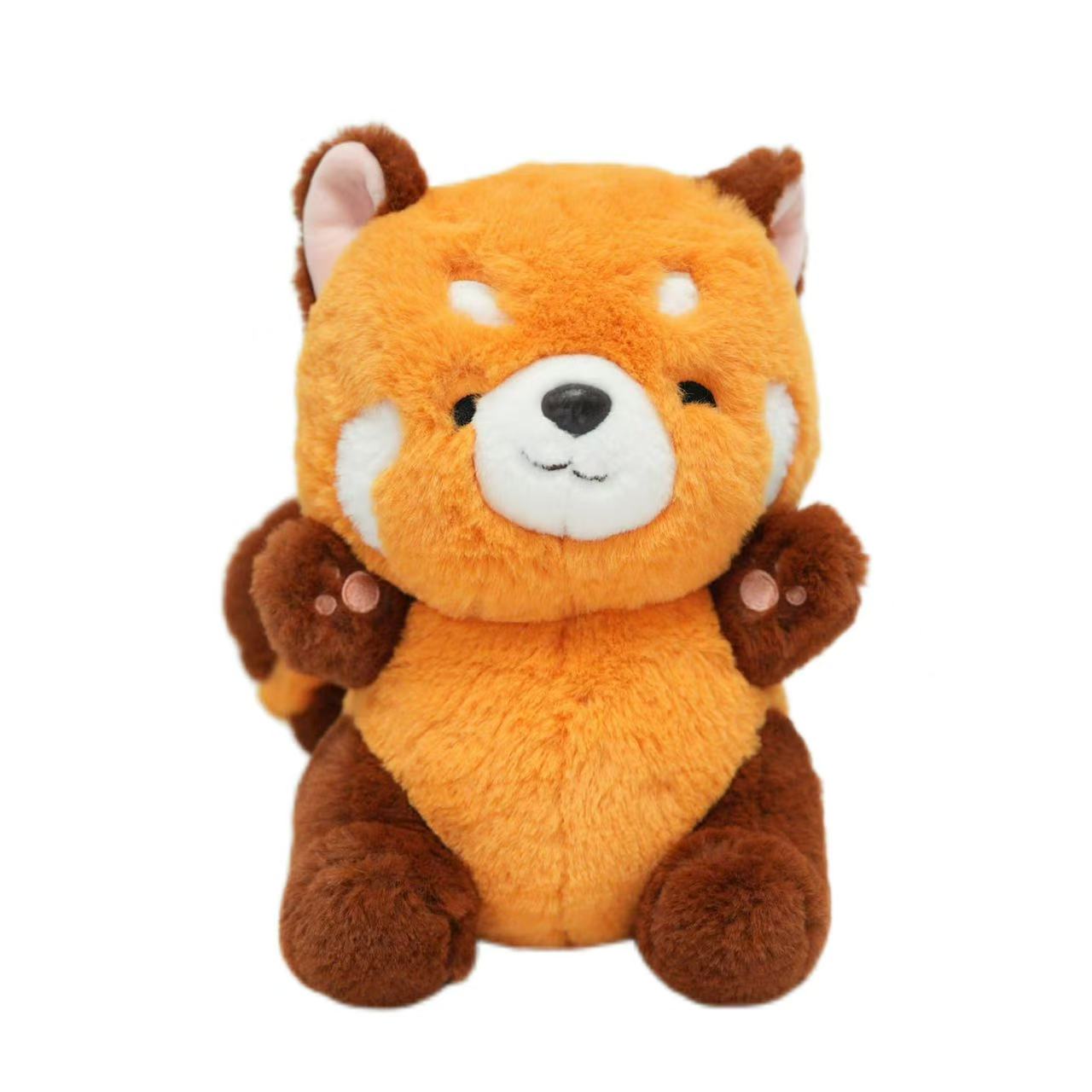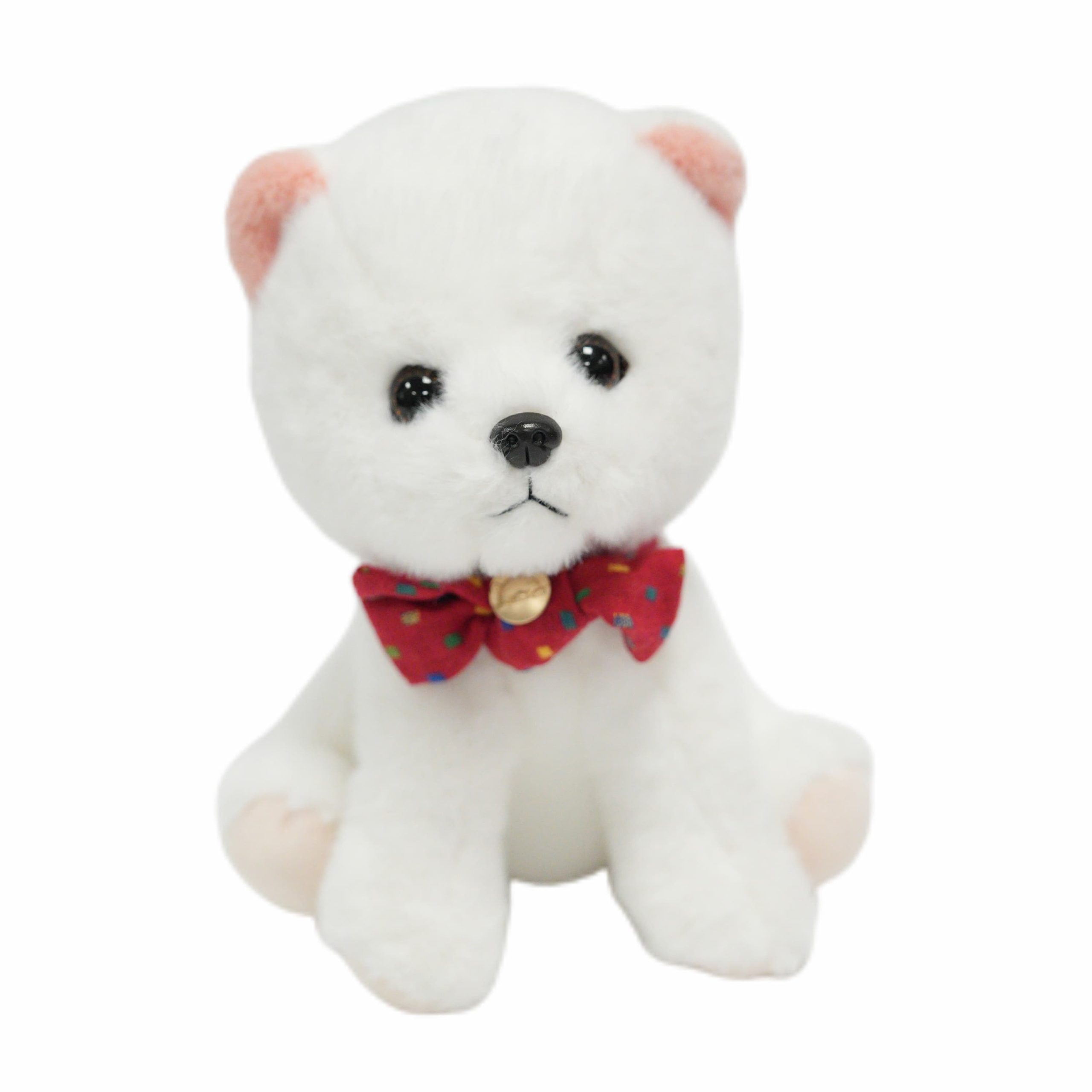Plush pillows are a kind of sleeping product that is both comfortable and soft. A truly high-quality plush pillow can not only make children sleep peacefully, but also become a beautiful memory of their childhood. If you want to choose a plush pillow that is both comfortable and safe for your child, you can learn about different types of plush pillows here, and you can also easily choose products suitable for different age groups.
What is a children’s plush pillow?
A children’s plush pillow is a soft pillow designed for infants and children. It is usually made of soft plush fabric and filling materials, and has both practicality and toy attributes. Compared with traditional pillows, plush pillows pay more attention to the cartoon appearance, skin-friendly touch, and support safety for children’s necks and heads. It is not only an auxiliary tool for children to sleep, but also a “plush partner” to accompany them as they grow up.
This type of pillow is mostly based on animal shapes (such as bears, rabbits, puppies) or cartoon characters. It has both a soothing effect and a certain decorative beauty, and is deeply loved by parents and children. It is widely used in many scenarios such as families, nurseries, kindergartens, and travel.
In addition, best and soft plush pillows are also anti-pressure, anti-allergic, and easy to carry, which are very suitable for children’s daily use and psychological growth needs.

Introduction to the material of children’s plush pillows
High-quality children’s plush pillows should be made of safe, environmentally friendly, and non-toxic materials to ensure children’s health and comfort. The following is a detailed analysis of common materials:
- External fabric material
Super Soft Plush: The most common surface fabric, with a fine texture, soft and skin-friendly, widely used in making cartoon-shaped pillows.
Flannel: Slightly fluffy, good warmth retention, suitable for autumn and winter use.
Coral Fleece: Thick touch, bright colors, wear-resistant and washable.
Cotton and linen blended fabric: Some pillow shells use cotton or blended fabrics, which are more breathable and have better moisture absorption.
- Internal filling material
Polyester fiber: Good elasticity and strong resilience, it is the most common filling material.
PP cotton (Polypropylene Cotton): Fluffy and soft, safe and non-toxic, with moderate support.
Memory Foam: Used in some high-end styles, it can adjust the support according to the shape of the head to prevent stiff neck.
Natural cotton/organic cotton: Emphasizes ecological protection, but the price is relatively high.
- Additional functional fabrics
Antibacterial fabrics: Some brands use silver ion or bamboo charcoal antibacterial fabrics to prevent bacterial growth.
Removable and washable cover design: The zipper-removable cover is easy to clean and prolongs the service life.
When parents choose children’s plush pillows, material safety should be the first priority, especially products containing harmful substances such as formaldehyde and fluorescent brighteners should be avoided.
Common sizes of children’s plush pillows
The size design of children’s plush pillows must be in line with the physiological structure differences of different age groups. It should not be too high or too large, otherwise it may affect sleeping posture, spinal development or cause respiratory obstruction.
Mainstream size range and application recommendations:
| Age Group | Recommended size(cm) | Features |
| 1~3years old | 25×35 / 30×40 | The pillow is thin, small, fits the neck curve, and is usually a single-layer structure. |
| 3~6years old | 35×45 / 40×50 | Increase height and width to better support the head and shoulder area |
| Children over 6 years old | 45×60 / 50×70 | Close to adult pillow standards, height adjustment can be added to accommodate growth needs |
Note:Different brands may make slight adjustments in specifications, but the general size is formulated according to the physiological development characteristics of children. Parents should choose according to the age and height of their children.
Children’s plush pillow details (partial)
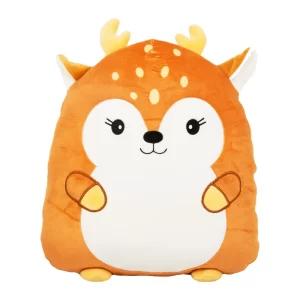
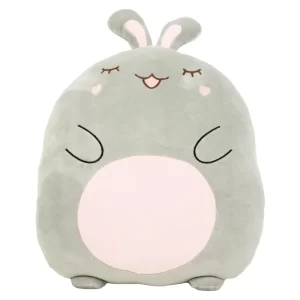
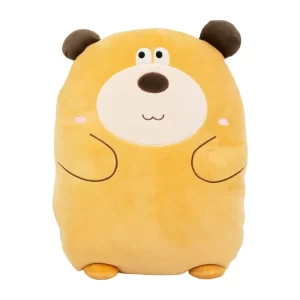

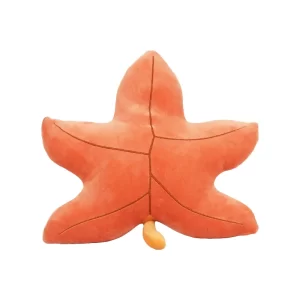
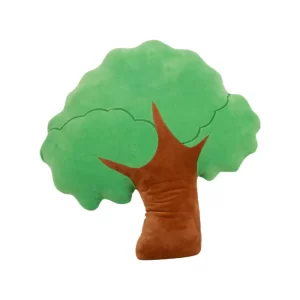

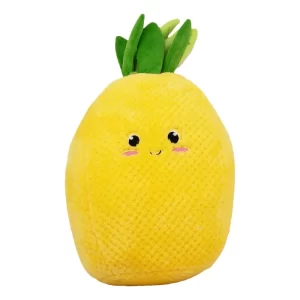
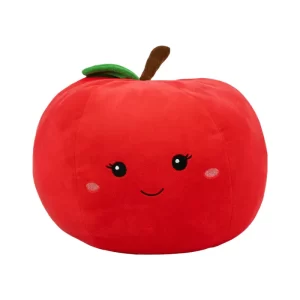

Children’s plush pillow function
Children’s plush pillow is not just a pillow for sleeping, it combines multiple functions and use values. The main functions include:
- Support the head and cervical spine
Plush pillows can provide soft support for children during sleep, maintain the natural curve of the head and neck, and reduce the risk of stiff neck.
- Soothe emotions
Many children will hug plush pillows to sleep before going to bed. This skin contact can effectively relieve anxiety, build a sense of security, and help children fall asleep faster.
- Toy function
Most plush pillows are cute in shape and have doll functions. They are children’s daily close partners, accompanying them in reading, playing or traveling.
- Decorate space
Colorful cartoon plush pillows can also be used as decorations in children’s rooms to beautify the environment and add a warm atmosphere.
- Multi-scene adaptation
In addition to the bedroom, children’s plush pillows can be used in nurseries, kindergarten naps, car travel, airplane naps, camping and other occasions.
Function of children’s plush pillows
The core function of children’s plush pillows is to achieve dual care for children’s physical and mental health through comfortable design and soft materials:
- Physiological protection
Protect the development of cervical spine: The appropriate pillow height helps prevent stiff neck, torticollis and other conditions;
Prevent head tilt and flat head: Especially in the infant stage, fixed plush pillows can prevent poor development of head shape;
Reduce the risk of allergies: The use of anti-mite and antibacterial materials can reduce exposure to allergens and is suitable for children with allergic constitutions.
- Psychological comfort
Pillows can be used as transitional objects to help children break away from their dependence on their parents;
Plush pillows with familiar smells and images can give children a sense of emotional security in unfamiliar environments.
- Improve sleep quality
Reduce the frequency of rolling and crying;
Maintain a comfortable position to help form deep sleep;
Create a sense of familiarity and enhance the ritual of falling asleep.
These effects not only affect children’s short-term sleep performance, but also their long-term physical development and emotional health.
How to clean children’s plush pillows
Children’s plush pillows should be cleaned regularly to avoid affecting children’s health. Different cleaning methods should be used for plush pillows of different materials and structures. The following is a detailed cleaning guide:
- Check the washing label first
Each pillow will come with washing instructions. It clearly indicates whether it can be washed, machine washed, or only supports dry cleaning.
- Understand the detachable structure
Some pillows are detachable, so you can open the zipper of the outer shell and machine wash or hand wash the outer shell;
If the inner core is memory foam or non-waterproof material, you should use disinfectant spray or expose it to the sun.
- Clarify the overall washing method
You can use a laundry bag for washing, avoid violent washing or mixing with adult clothes;
It is recommended to use baby-specific laundry detergent, and avoid using adult laundry detergent containing fragrances and irritating ingredients;
- Regular daily cleaning and maintenance
It is recommended to pat and remove dust every week to avoid bacterial growth, and expose it to the sun 1-2 times a month to dehumidify and sterilize;
If the pillow has turned yellow, has an odor, or is deformed, it should be replaced in time.
Tip: Correct washing and maintenance methods can greatly extend the service life of the plush pillow and ensure hygiene and health.
What age group of children is suitable for children’s plush pillows?
Children’s plush pillows are not suitable for children of all ages. You should choose the right pillow according to the child’s development stage and physiological characteristics:
- 0-6 months
You need to use it with caution or use a special baby shaping pillow. Because the baby’s cervical spine development is not stable at this stage, it is not suitable to use a pillow that is too thick or too soft.
- 6 months-2 years old
You can gradually use a low pillow or a shaping plush pillow. When purchasing, make sure that the pillow is of moderate height and the material is safe and non-irritating.
- 2 years old-4 years old
Children at this stage can use plush pillows. Children at this stage may lack a sense of security and companionship. Plush pillows can not only provide support, but also be used to soothe children’s emotions.
- Over 4 years old
You can choose a larger plush pillow that takes into account both shape and support. It is especially suitable for U-shaped pillows for travel and cartoon pillows for naps.
Warm Tips: You should regularly observe your child’s sleeping posture, sleep quality, and whether there are allergies, and adjust the pillow type in time.
Conclusion: Plush pillows are gentle guardians of children’s growth
Children’s plush pillows are far more than just a cute sleeping product. They represent a caring companion in the growth of children. Whether in terms of sleep support, physiological care, psychological comfort or play attributes, it plays an irreplaceable role.
When purchasing, parents should consider the material safety, size adaptability, functional diversity, and cleaning convenience. A suitable children’s plush pillow can make children feel warm and safe every time they fall asleep, and accompany them to grow up healthily and happily.
